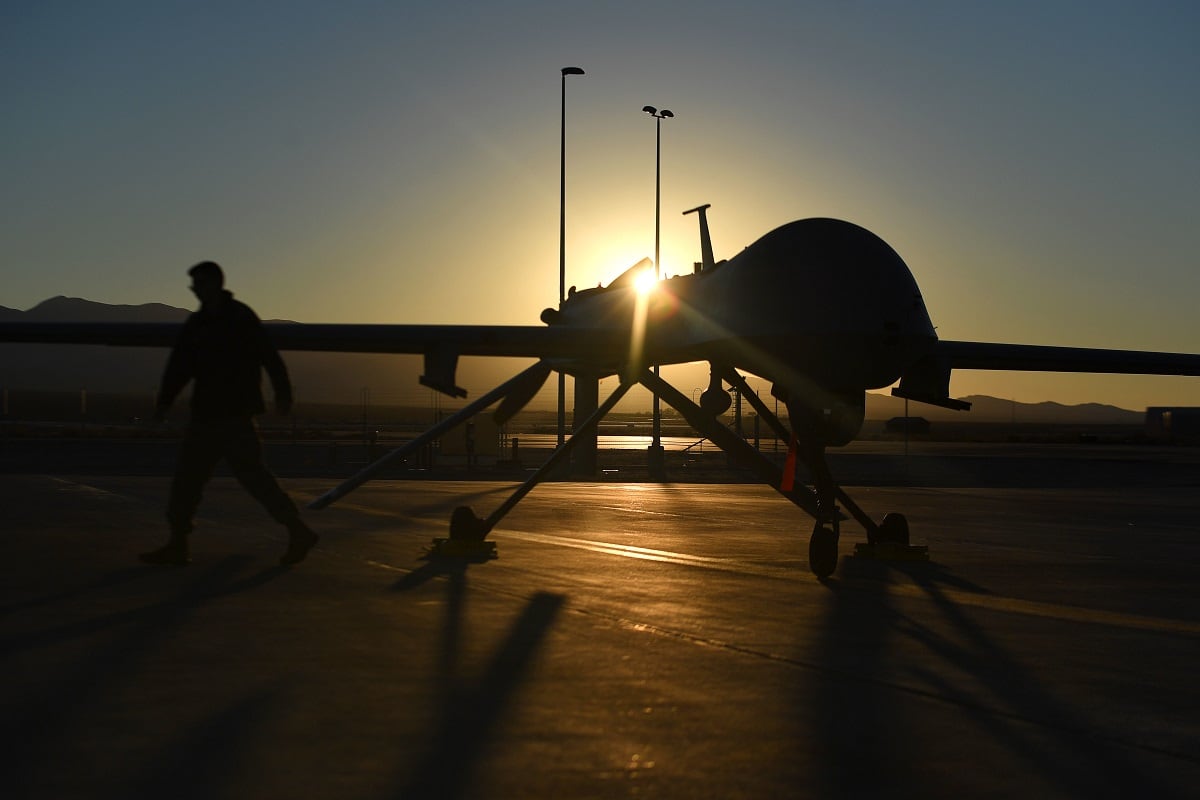Over an seven-year period, the Air Force paid $17.7 million to a company to improve the MQ-9 Reaper’s ability to measure weather data, which it thought could have helped it track how fast ice is building up on its wings in-flight and avoid crashes.
Except no such weather support capabilities were ever delivered, according to a Defense Department inspector general report released Friday — or even needed. And the money — which came from overseas contingency operations funding and not through the usual appropriations process — was wasted.
The Air Force thought such weather-tracking capability would have helped the Reaper and its predecessor, the now-retired MQ-1 Predator, operate in ice and extreme wind, the IG said in its report, “Evaluation of Weather Support Capabilities for the MQ-9 Reaper.”
When the Reaper was designed and built, the IG said, it had limited ability to track the weather. The analog sensors measuring outside air temperature and wind speed and a sensor that detected ice buildup once the ice exceeded a certain level were not enough, the IG said. And after a series of costly weather-related crashes involving Predators and Reapers, the Air Force funded a study to find better weather sensors for the drones.
The Air Force funded that project between fiscal 2010 and 2016, the IG said — but it went about it in entirely the wrong way. It used OCO funding, which typically goes to pay for wartime operations, when it should have been funded with research, development, test and evaluation funds. And when OCO funding was cut, the Air Force in 2016 pulled funding for the Reaper’s weather project.
What’s worse, the Air Force later decided that the sensor wasn’t needed at all.
RELATED

Originally, the weather sensor and software was being developed for both the Reaper and the slower, less-capable Predator. But the Predator, which was retired in December 2018, accounted for six of the nine weather-related Class A mishaps that led the Air Force to decide such a sensor was necessary. And the Reaper’s three weather mishaps would not have been prevented by the sensor.
The Air Force never validated the requirement for the capabilities, which could have figured out in advance that this sensor wouldn’t have helped.
“As a result, the Air Force wasted $17.7 million dollars in OCO funding developing a capability that was never delivered,” the IG said. “Had the Air Force A2/6 [intelligence, surveillance, reconnaissance and cyber effects operations] followed appropriate acquisition processes, it could have used the $17.7 million on other Air Force OCO requirements.”
The IG recommended the Air Force chief of staff review the actions of the ISR personnel who were responsible for this project, and decide if they “should be held accountable for wasting resources on capabilities that were being developed without validated requirements” and which didn’t result in a usable system.
The Air Force’s assistant deputy chief of staff for ISR and cyber effects operations disagreed, and said the IG should conduct further interviews and review more documents. The IG said it was not satisfied by the additional documents it was provided, and is still seeking more answers.
The IG also said the Air Force’s auditor general should review how the service’s components use OCO funding to develop projects, to make sure they aren’t used for capabilities that aren’t needed, or could be cut off due to shortages in OCO funding. The Air Force agreed, and said a follow-up audit should be completed by the end of September.
And the Air Force should share the results of its MQ-9 weather study with other services that use the Reaper, the IG said. The Air Force agreed.
Stephen Losey is the air warfare reporter for Defense News. He previously covered leadership and personnel issues at Air Force Times, and the Pentagon, special operations and air warfare at Military.com. He has traveled to the Middle East to cover U.S. Air Force operations.





